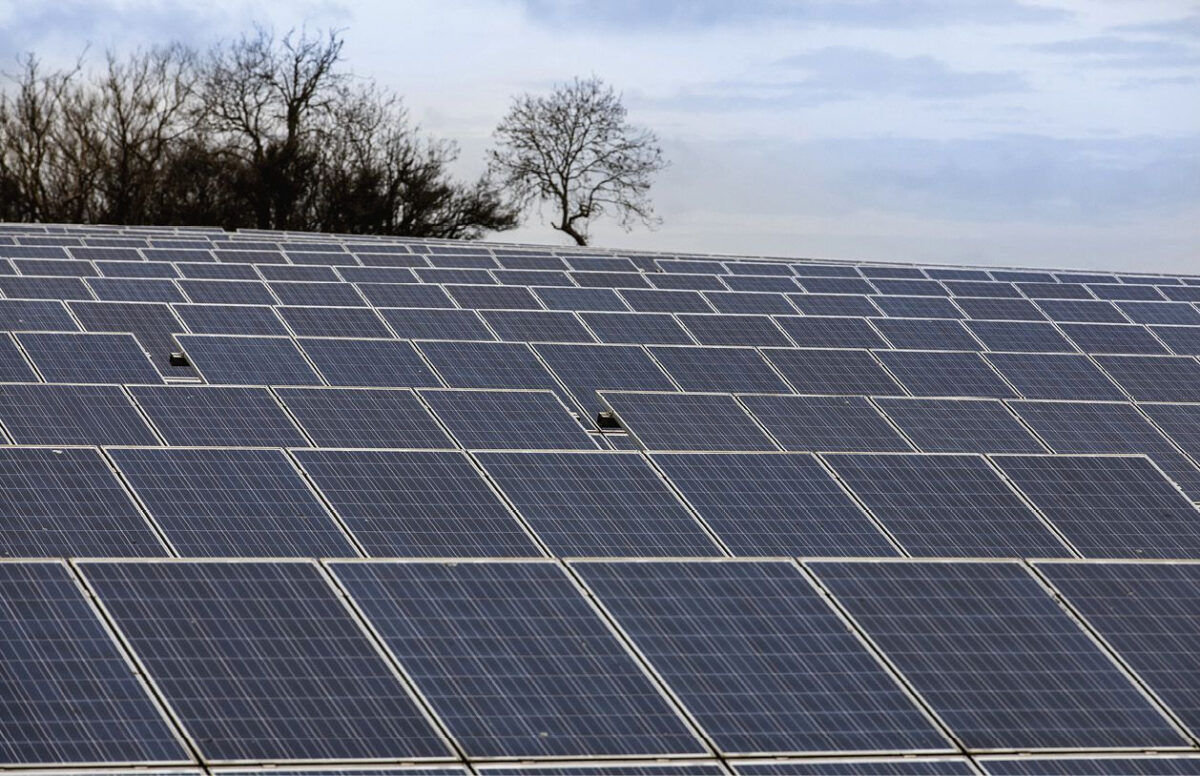The mid to late 2000s saw a major influx of technological innovations that we now consider indispensable – from the first iPhone to tablet computers, new-generation gaming consoles, and e-readers. Another major technology that saw a significant sales boom during this time was solar power, with Europe experiencing a fourfold increase in installed solar capacity from 2008 to 2011, and a significant rise in green energy production as a result.
Fast-forward to today and there is arguably more appetite than ever for renewables. In the wake of the Ukraine war, businesses and individuals alike are looking to become increasingly sustainable and self-reliant in how they source their energy. BayWa re’s own research report, “The Decade That Matters 2.0,” indicates that 96% of UK and European businesses are either already sourcing their energy from renewables or plan to in the near future. Meanwhile, rising energy costs have meant that the solar investment payback period has fallen from around 16 years to four, making it a more appealing investment.
As we’ll come to explore, though, the building of new renewables plants is not the only way to secure a faster energy transition. A significant and often overlooked way of boosting existing installations is available through revamping and repowering.
Major overhaul
Few among us still own an original iPod, Kindle, or PlayStation from the 2000s. These have long since been upgraded due to their lagging response times and a drop in output. The same goes for the life cycle of solar plants: In the 12-plus years since the solar boom, there have been major developments when it comes to the efficiency of solar technology. Many old parks have begun to lose energy output and fall behind the latest advancements. So, why is it that we’re not as quick to update this technology as we are with our personal devices?
This is especially puzzling when we consider that revamping and repowering affords us a way to harness the advancements of modern technology to improve output and extend the lifespan of solar installations. This way, we are ensuring that the latest advancements in solar technology are not reserved solely for newcomers to the green energy transition. By investing in existing structures, solar owners can restore plants to their original installed capacity, optimize efficiency, improve land use, and increase energy output.
The case for repowering and revamping is clear but what do the processes involve? Revamping is the replacement of technology, or any under-performing components, with newer versions that will improve an asset’s energy production. Repowering refers to an increase of the installed generation capacity of assets, to produce much more power.
For example, a power plant in Aude, southern France, was able to boost its energy yield by 38% after revamping, while using approximately half the land area that had been allocated to solar. This meant there was, subsequently, enough freed-up space to build an entirely new plant and to produce up to two and a half times the energy that the site had generated before.
Revamping and repowering have the potential to accelerate the transition to renewables by reinforcing and even increasing the benefits of solar technology. This is not a half-hearted upgrade that adds a bigger touchscreen or a new camera – this is a major leap, the equivalent of going from a legacy mobile phone to a smartphone.
Repowering solar
As well as injecting old solar-technology installations with new life, revamping and repowering plays a role in reinforcing the benefits of solar. A key manner in which revamping and repowering do this is through the renewed efficiency they bring to solar installations. The boosted energy yield at the aforementioned solar plant in Aude illustrates how revamped and repowered solar units make a strong case for the effectiveness of solar as a source of reliable and sustainable power.
Another considerable benefit is reduced costs. A persistent, common misunderstanding is the belief that solar energy is too expensive, with initial outlay overshadowing any potential savings. Yet, as we’ve already seen, escalating energy prices are increasingly maximizing solar power’s financial benefits, not just through the savings associated with self-sufficient energy production, but also through the added potential to sell surplus energy back to the grid.
On top of that, decommissioned components that are still functional and performing – typically modules and inverters – can find new owners. There is a developing market for pre-owned equipment which can benefit users that have more restrictive budgets.
Action plan
Given its considerable advantages, how should solar site owners go about revamping and repowering their installations? The first step is assessing the financial performance of an asset. Asking what the current costs and energy output are compared to what they could be after repowering gives owners a good idea of just how valuable such an investment will be. There are now many more options with repowering and revamping, and broader business plans than ever before. We used to be limited to incentives such as feed-in-tariffs or net metering but now we have the options of self-consumption and energy storage – changing the way solar plants are used in the process.
There are several technical components available on the market, so it’s important that asset owners do their due diligence when it comes to compatibility and determining which components are best suited to a proposed project. This could come down to energy output and the amount of available space. Essentially, owners should be looking at how their solar installation can work hardest for them.
Finally, legislation must be looked into, to ensure that any planned changes will be compliant with local and national regulations. The red tape surrounding renewables can be frustratingly extensive in some countries. While efforts are under way to smooth out these processes, it can be worth accounting for prospective waiting times.
The revamping and repowering process is not without complexity, of course, and a significant part of this is navigating through business models, technical requirements, and legal compliance. To some extent, revamping and repowering can be included within operations and maintenance services but other competencies are also needed that additionally include engineering, planning and construction, and familiarity with early-generation equipment. This is why it is advantageous to partner with specialized, multidisciplinary companies within which several departments can collaborate.
Updating priorities
In the same way that a Nokia 3310 is not capable of the same functions as today’s smartphones, green energy technology from the early 2000s cannot compare to what is available now. But unlike our mobile phones, when it comes to failing to update solar hardware, the stakes are much higher. As equipment at aging solar parks wears out over time, conversion efficiency continues to drop and potential is wasted.
Put simply, this is the decade that matters and there’s no time to lose. Repowering and revamping must be prioritized to maintain the potential of solar assets moving forward.
 About the author: Tomaso Charlemont is the product manager for PV revamping and repowering in Europe, the Middle East and Asia at BayWa re. He is an executive with more than three decades' experience in business development. After more than 20 years in data communication, he embraced a second career in renewables, in 2008. Over the past 15 years, Charlemont has developed and consolidated his experience in solar by joining inverter original equipment manufacturers Satcon and Chint Power Systems; French engineering, procurement, and construction services company Vergnet; and UK renewables developer RES. In 2022, he joined BayWa re.
About the author: Tomaso Charlemont is the product manager for PV revamping and repowering in Europe, the Middle East and Asia at BayWa re. He is an executive with more than three decades' experience in business development. After more than 20 years in data communication, he embraced a second career in renewables, in 2008. Over the past 15 years, Charlemont has developed and consolidated his experience in solar by joining inverter original equipment manufacturers Satcon and Chint Power Systems; French engineering, procurement, and construction services company Vergnet; and UK renewables developer RES. In 2022, he joined BayWa re.
The views and opinions expressed in this article are the author’s own, and do not necessarily reflect those held by pv magazine.
This content is protected by copyright and may not be reused. If you want to cooperate with us and would like to reuse some of our content, please contact: editors@pv-magazine.com.



By submitting this form you agree to pv magazine using your data for the purposes of publishing your comment.
Your personal data will only be disclosed or otherwise transmitted to third parties for the purposes of spam filtering or if this is necessary for technical maintenance of the website. Any other transfer to third parties will not take place unless this is justified on the basis of applicable data protection regulations or if pv magazine is legally obliged to do so.
You may revoke this consent at any time with effect for the future, in which case your personal data will be deleted immediately. Otherwise, your data will be deleted if pv magazine has processed your request or the purpose of data storage is fulfilled.
Further information on data privacy can be found in our Data Protection Policy.